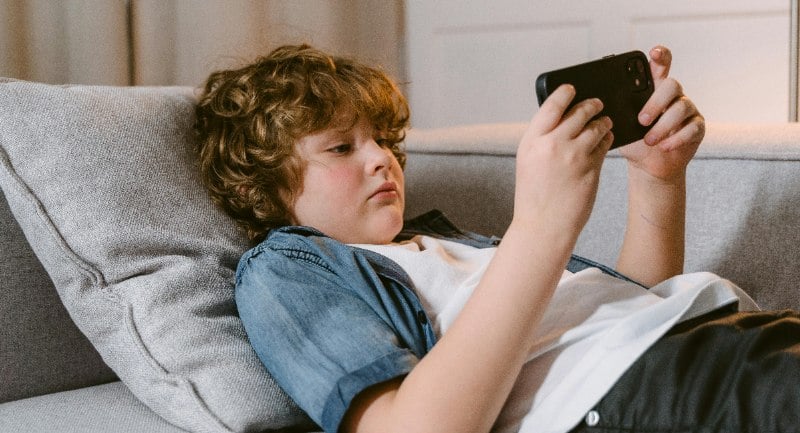The government’s decision to add YouTube to its social media ban for those aged 16 and under in Australia will have an impact felt across adland with a vital channel lost to media buyers.
Australia’s youth will still be able to access YouTube, but will not be able to login with an account. This strips away algorithmic viewing suggestions and makes YouTube a more purpose-driven platform in that users will need to actively search for videos without them being served up as a never-ending stream of viewing content.
It’s worth considering a UK study from Barb which found that TV sets are also the most popular device for children aged 4-15 to watch YouTube on, so there’s likely already a lot of viewing taking place on parents accounts and accounts that are already not logged in.
The argument YouTube makes is that a “logged out” user deprives them of age-appropriate experiences, along with the additional safety guardrails YouTube has in place for younger people. YouTube will join Instagram, Facebook, TikTok, X, and Snapchat in the ban, which is in effect from December 10.
Mediaweek spoke to Ori Gold, CEO and Co-Founder of indie agency Bench Media, and Bryce Coombe, Managing Director of influencer marketing agency Hypetap, about how the industry will deal with the ban and what opportunities are opened up by this roadblock.
Mediaweek: Once the ban is in place, do you think YouTube will remain an attractive channel for reaching the U16s? Are there obvious channels that you think there’ll be a greater focus on?
Gold: Once the ban comes into effect, I’d advise buyers targeting under-16s to move away from YouTube as an advertising channel. Its effectiveness and ability to index this group will be significantly reduced. Much of the viewing will shift to shared family accounts or logged-out devices, which strips away the reliability of targeting. Instead, buyers should focus on channels where youth attention is both high and contextually relevant — gaming environments, curated VOD on youth-oriented channels, contextual placements on websites, and education or creator-led content. These offer both reach and meaningful engagement without relying on weakened data signals.
Coombe: YouTube will still be attractive for reaching the U16 cohort, but in a different way. The focus for brands won’t be on direct targeting of U16s, but rather on broader, contextual advertising like Influencers, that’s tied to the content itself rather than the user. We’ll also see a greater focus on family-friendly viewing strategies and platforms like YouTube Kids, which are exempt from the ban. Gaming platforms, private messaging apps, and other unregulated channels will also likely see a surge in engagement from this audience.

Ori Gold, CEO and Co-Founder of Bench Media
2) Will buying methodologies change that much? YouTube will still be able to identify younger audiences based on interests/age/gender regardless of logins.
Gold: They won’t change dramatically, but the quality of the signals will. YouTube will still offer interest and demographic proxies, but those are blunt compared to logged-in age data, especially on shared devices, since you don’t know who’s watching. For brands targeting under-16s, the smarter move is to diversify the activity.
Coombe: With no logged-in accounts for U16s, granular targeting based on age, gender, or interests will be practically difficult for digital media planners and buyers. The ban will result in a shift away from this kind of audience-based buying strategy and instead, buying will leverage more contextual and content-based approaches. This will be a significant operational shift for many buyers, forcing a move away from simple, easy buying and into more thoughtful, creative strategies that prioritise context over direct audience data.
3) Are buyers concerned about this at all? Or will it largely be business as usual once the ban comes into effect?
Gold: For most buyers it will feel like business as usual, but for brands with under-16s as their core market this is a real concern. The issue isn’t that reach disappears, it’s that confidence in the data does. YouTube can’t give the same level of certainty once the ban is in place. Those brands will need to rethink their mix and put more weight on channels that can deliver youth audiences with greater reliability.
Coombe: The vast majority of ad spend isn’t targeting U16’s, so the real issue is the potential for decreased total viewership hours on platforms like YouTube, which could make it harder for the platforms to justify their scale to advertisers. It won’t be “business as usual,” but will be a period of adjustment and innovation.

Bryce Coombe, Managing Director of Hypetap
4) Is there anything else you think is especially interesting about the ban from a buyers’ perspective?
Gold: This ban exposes the over-reliance on one specific channel in the media mix. It’s a reminder for buyers not to be lazy, but to spread risk and think more broadly about how youth audiences can be engaged. That means leaning into gaming environments, curated VOD, contextual placements, music and audio platforms, and creators in education or culture, channels that naturally hold attention and build trust with this cohort.
Coombe: The most interesting aspect is the creative re-thinking this ban will force. It’s an opportunity to move beyond a reliance on audience data and focus on the power of great content and context, which is what Influencers do a brilliant job of. This ban could help separate the smart, agile brands from those who rely on outdated targeting methods.
One of the outcomes could be a return to co-viewing strategies (families watching content together on the couch), with brands creating content that appeals to both parents and children watching YouTube together on a TV.
